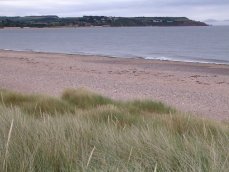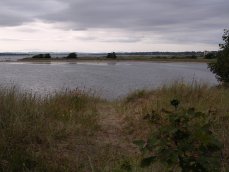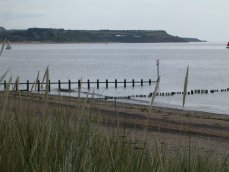Habitats
The following short introduction can in no way reflect the complexities of the habitats here but an indication of their wildlife value can be described numerically; the site supports over 2300 spp of invertebrates, 720 plants and 480 fungi of which many are National Rarities and some species were new to science when discovered here. The gradations of rare habitats are also of regional significance; it is the second most important reserve in Devon, after Braunton Burrows.
 |
 |
 |
Langstone Rock at the southwestern corner
of the Recording Area is a 15m high New Red Sandstone megalith, a distinctive local
geographical landmark, very distinct from the spit which extends NE from
it. The base of the spit has largely
suffered from tourism development and a ‘hard-engineered’ sea defence scheme
but the remainder of the spit is semi-natural. The depressed central zone of the spit becomes flooded in
winter, it supports part willow-birch-alder scrub with ponds, small areas of dune
slack and marshy grassland.
The majority of the Outer Warren is a mosaic of semi-fixed dune grassland and bramble Rubus agg. scrub with a seaward mobile dune ridge, these two habitats are closely linked on Warren Point. The sandy, gravely beach and intertidal banks, which stretch over a mile out to sea, are in a constant state of flux with rapid rates of creation and erosion, especially since the failed Beach recharge in 2018.
The Inner Warren has
historically been stable and supports fixed-dune grassland, strips of rare dune heathland within the
Golf Course roughs; here there is also a small planted copse of
Turkey Oak Quercus cerris. Boosted by planting in 1935, the estuarine side of the
spit supports an area of Cordgrass Spartina
saltmarsh and thereafter are large expanses of estuarine mudflats. The Bight is a shallow bay enclosed by
Warren Neck supporting a glasswort Salicornia
spp. Community, with increasing areas of saltmarsh.